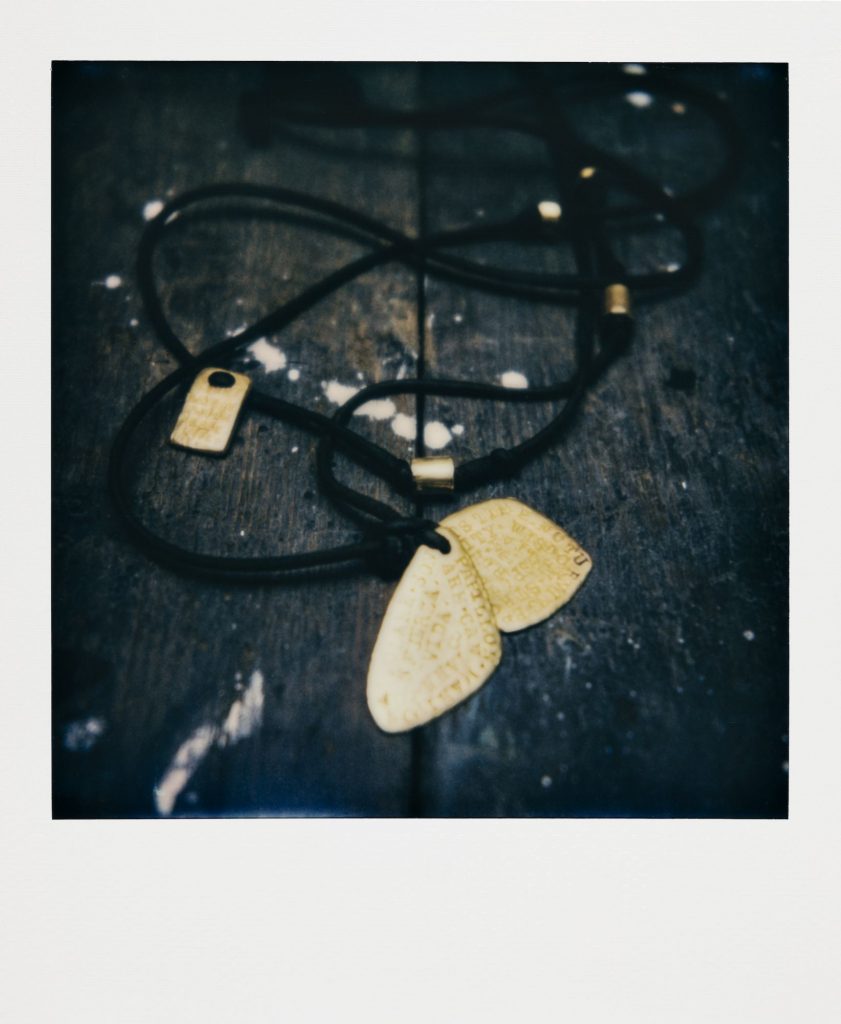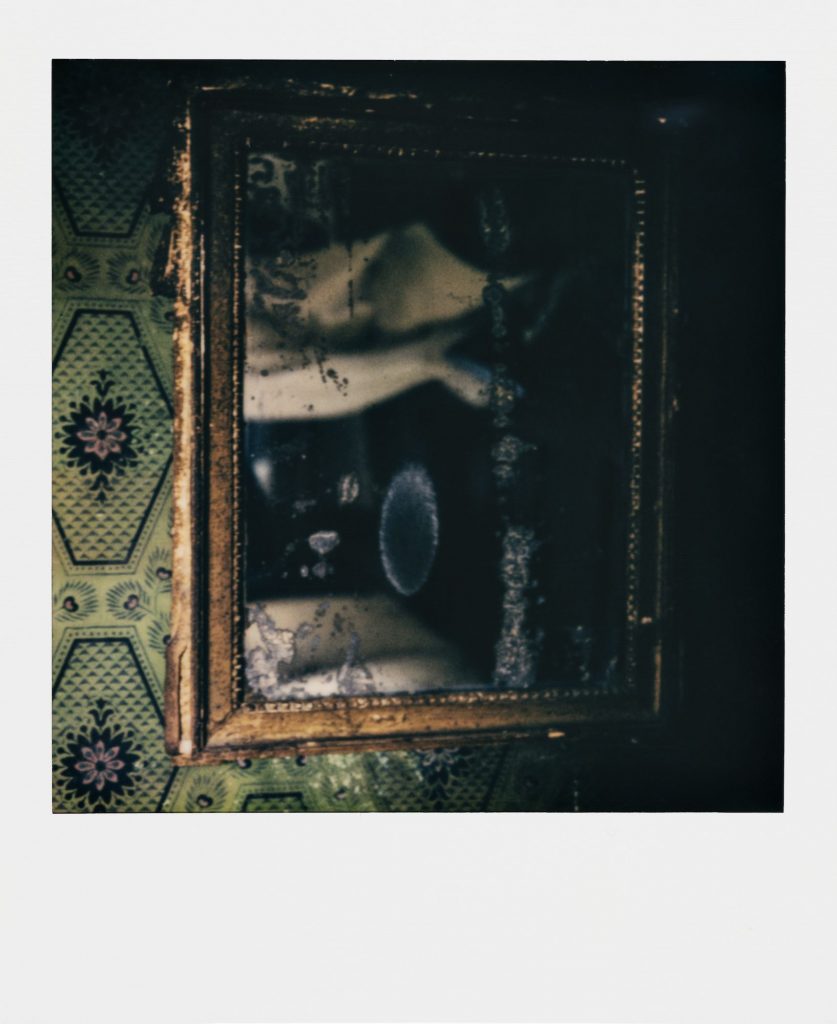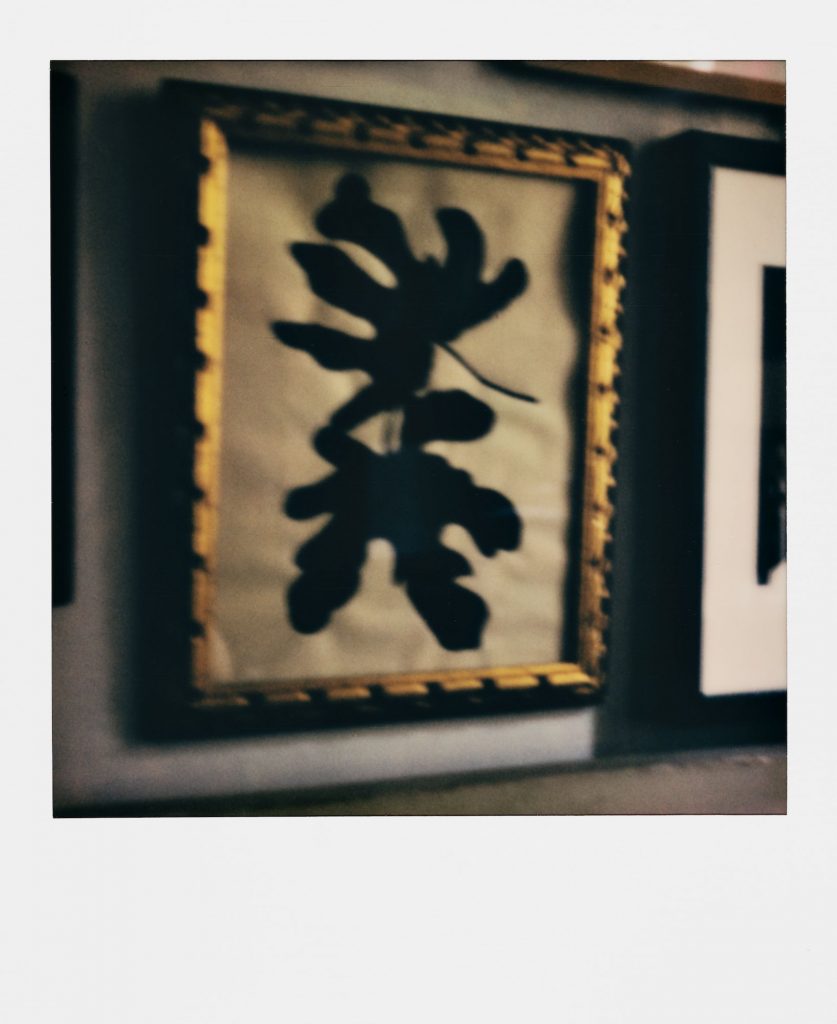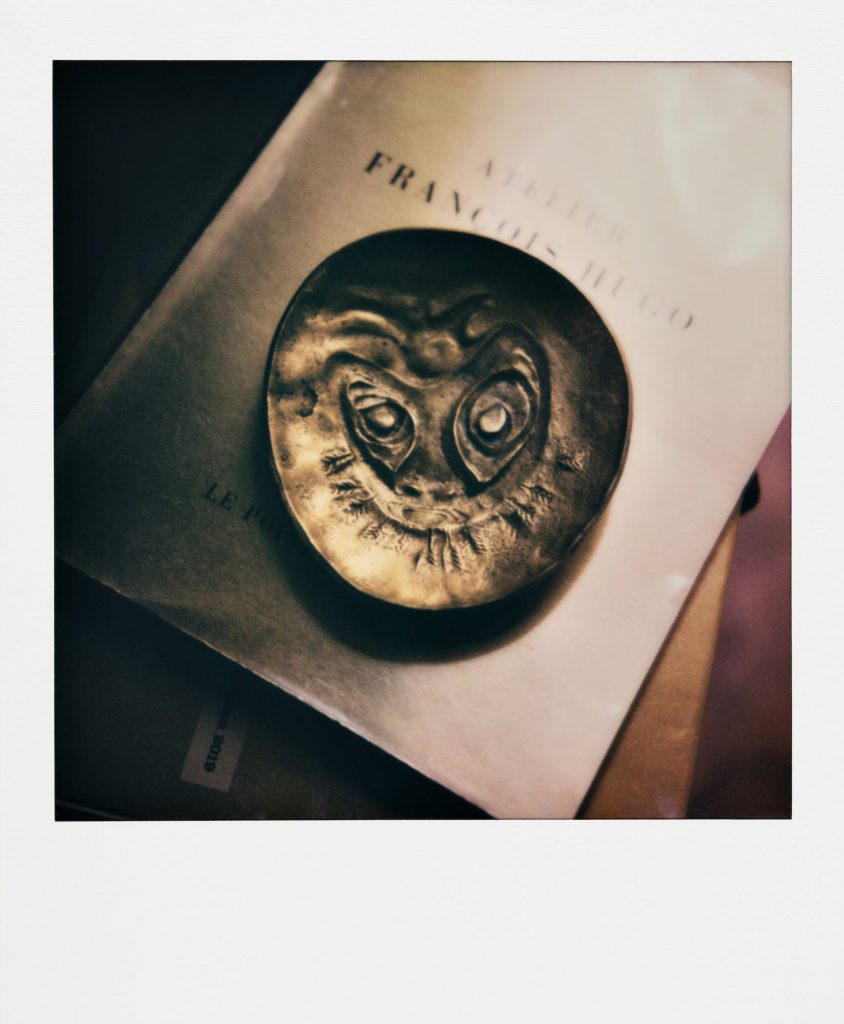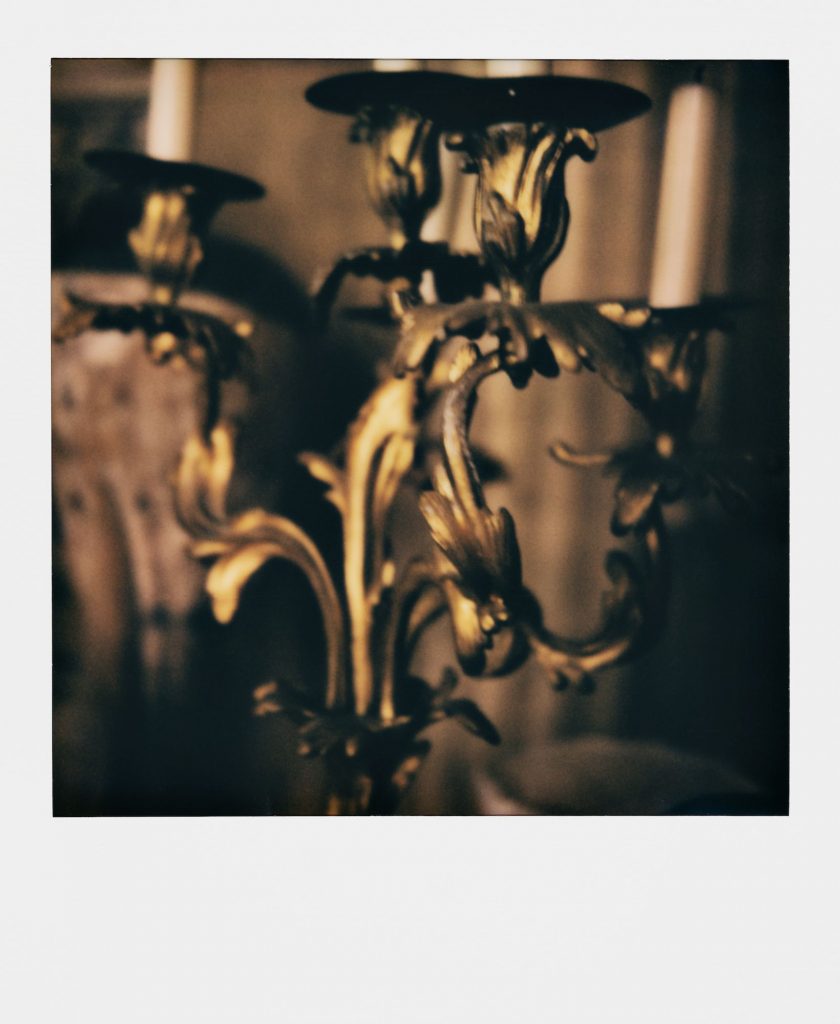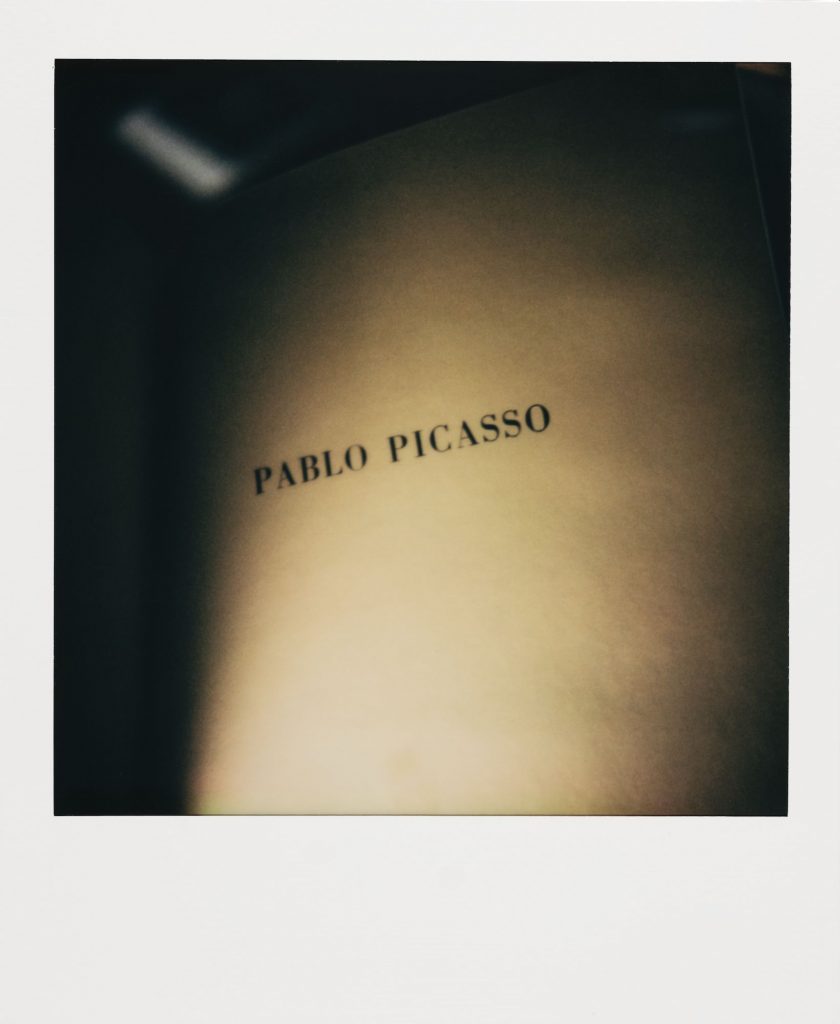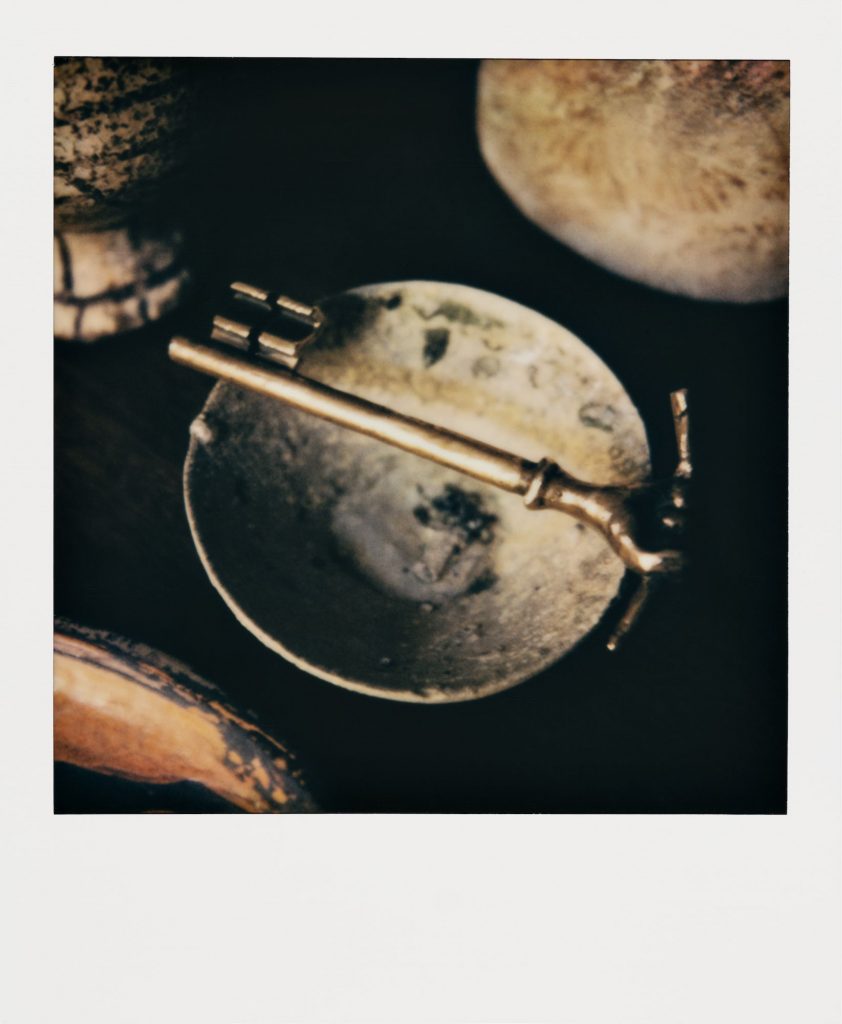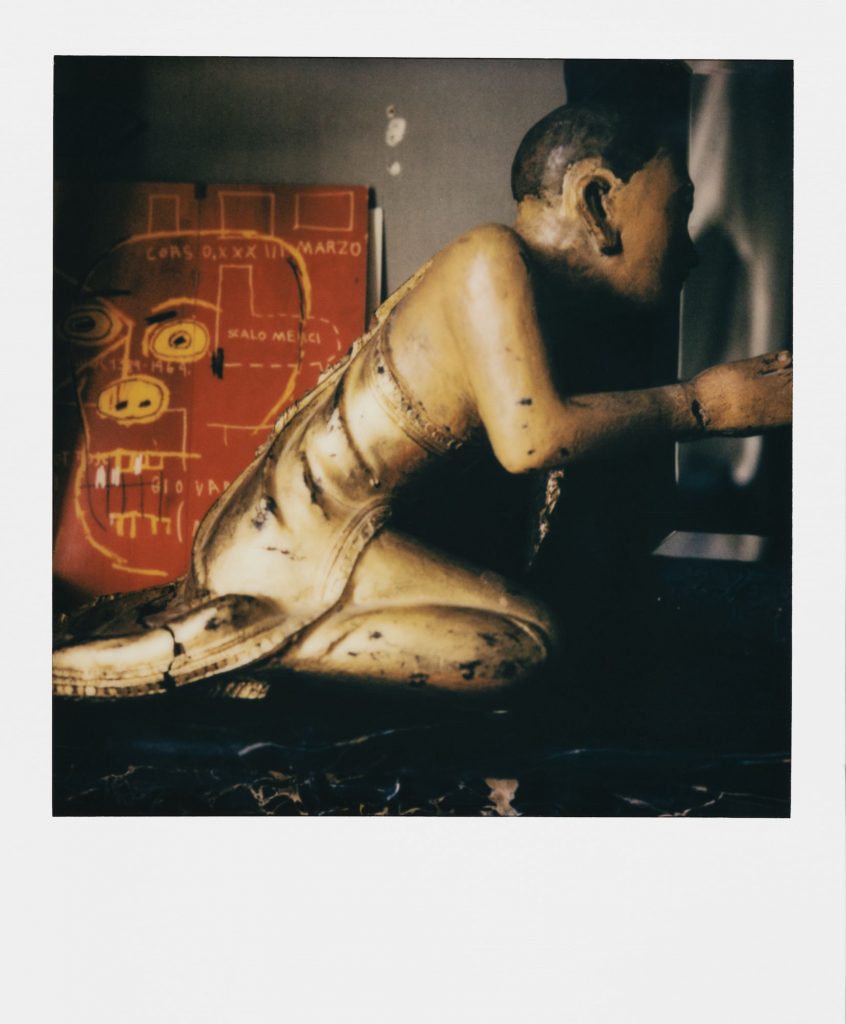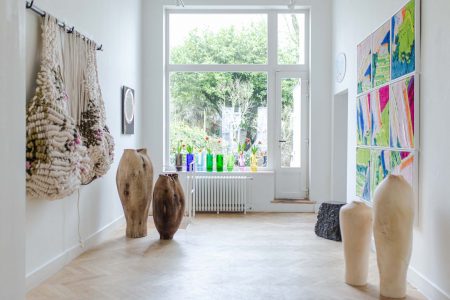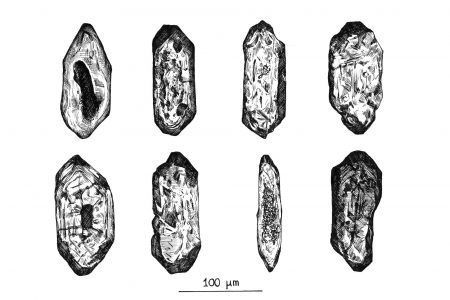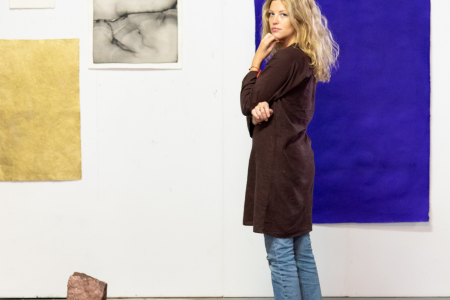François Halard: Aurum
Dawn, sacred source and gold as the memory of time. François Halard presents here a carte blanche for TLmag37: State of Gold, featuring polaroids that tell us about his personal journey.
The Latin word for gold, aurum, derives from the Greek word Aurora, the golden goddess of the dawn. Aurum, Aura and Aurora share the same etymology, all summoning ideas of splendour and radiance associated with this precious metal. The sun manifests the colour of gold at sunrise and at sunset.
François Halard’s connection to gold is reflected by his love of ancient Greece, Rome and Egypt; in mythology and memory, and in the emotional threads that weave those individual and collective remembrances together. And of course, in the power of light (and shadow) that enables the process of photography to exist.
Halard has photographed architecture and interiors since he was young. His career developed quickly from photo editor to editorial assistant to photographer of haute couture and portraits. His work has featured in numerous, world-renowned publications, among them GQ, Vanity Fair and French Vogue. His encounters with new places and people, particularly artists and their personal environments have been revelatory in the genre. Away from the fashion world, Halard has travelled in search of iconic places and people, immortalizing the treasures he finds, with the click of the shutter, through his lens and onto photosensitive paper.
TLmag: What does the word ‘gold’ evoke for you?
François Halard: Immediately, it reminds me of purity. It is also associated with magic and alchemy. It makes me think about how, for so many centuries, it was a fantasy to transform something into gold, like the transformation of something into desire, eternity and beauty. It also evokes memory; gold is a memory of time.
TLmag: Thinking about specific memories that you might hold on to related to your work as a photographer, for example the first time you set foot on the rooftop of the Casa Malaparte, or when your hand touched the handle of Cy Twombly’s front door for the first time, do you have any particular ‘precious’ memory that is attached to one of these iconic or mythical places you have photographed?
F.H.: The most precious thing about my career so far, or rather, the most precious moments of my life as a photographer have, in fact, been in fulfilling the dream of going inside these places. I waited fifteen years before I could gain inside access to Casa Malaparte. For Cy Twombly’s house, maybe twenty years. I had dreamt about these places for so long. So, the preciousness is also related to the idea of waiting, or the pleasure of waiting during my artistic search.
TLmag: You reflect on the meaning of time and of our meaning in the world…
F.H.: Yes, like Proustian memories, dreaming about your own personal research of time. Or dreaming of your own nostalgia of time and places… this leads me down my own memory lane.
TLmag: The first firm evidence we have of human interaction with gold occurred in ancient Egypt around 3000 BC. It was of such importance that the capstones of the pyramids of Giza were made from gold. In your photographic subjects, you often capture details of ancient or classical civilizations such as the ruins of pantheons, temples or statues. What is so special about these civilizations for you?
F.H.: I find the ancient world very modern. I don’t think we have made so much progress since then. I discovered antiquity quite late in life – I was never taken to visit the Louvre as a child – and I discovered the Mediterranean very late, in my twenties. When I found that world, which is a mix between mythology and reality, I felt so immediately connected to it. I often wonder if perhaps it may have something to do with a past life. Interestingly, during the lock-down in March 2020, I did a DNA test. My main DNA traces back to Italy and Mexico – two of the main places I have been so inspired by and enjoy photographing.
TLmag: So there is something in this personal interest and inspiration that seems inherent in you, in your nature, what a fascinating discovery!
F.H.: Yes, precisely. All early civilizations have raised questions about the meaning of life, the meaning of culture and of nature. They adhered to a more relational belief, viewing themselves as closely interwoven with nature and with the universe which is something that seems further from the world perspective we maintain now.
TLmag: I agree. Ancient world views seem to have been so much more holistic than the fragmentary view we have now, of seeing ourselves as separate from nature; the mind separate from the body. Do you think we need to return to some ancient ways of thinking?
F.H.: We have certainly created much disconnection between ourselves and nature. And it feels like the wrong direction. These days, ‘self’ is too much at the centre of things. I think that by knowing about these ancient or archaic civilizations and understanding their beliefs, it can take us somewhere closer to modernity. We have to build on top of the past. It doesn’t come from nothing.
TLmag: Revisiting archaic history and meaning and immersing yourself in the surviving fragments of memories, you surround yourself with a whole array of objects in your house. If the house is a self-portrait, how important is it for you to be surrounded by all the books, the lamps, the paintings, the vases and other curios?
F.H.: I live within real and invented memories. Personally, I don’t mind the idea of being surrounded by objects that I appreciate. They are, in a way, like protection for me, against the outside world. It started when I was a child. I spent a lot of time isolated in my bedroom in the house I grew up in. This house was full of beautiful, intriguing objects as my parents were both interior designers. Over time, I started to question how I could make a body of work out of these objects. Instead of just being protected and inspired by my surroundings, I thought about how, by photographing them, I could also inspire other people. I thought about how I could change the energy somehow. I decided to create an atelier inside my house.
TLmag: Yes, I see that during the first major lock-down you created a series of polaroid photographs that you titled ‘56 days in Arles’ using your own environment, your own home, as the base of your photographic work with personal meaning. Can you tell me about that project? And how has your creative work evolved since then?
F.H.: From the age of 14, I took my father’s camera and started to photograph the objects around me. This is how it all began. It was as simple as that. During the lockdown, for the first time, I worked on one polaroid photo, on a daily basis, for a specific period of time. It was total concentration every day for 56 days. I was focused on one point, one object, on one moment and one light, it was very meditative.The new body of work I am currently developing is very important to me. I always wanted to do something more personal with my images. By accepting the fact that I could go down a new route to experiment with new ways of working, this latest series appeared very naturally. I have dedicated so much time working for others that I now feel like I have time to work on more personal projects, to do something really meaningful for myself. I am currently working on the surface of older photos using gesso, wax and oils. By reappropriating these existing images – for example the series I shot of the antiquity collection in Cy Twombly’s house – by dripping wax over their surface or painting or writing in oil, these memories are sealed even further for me.
TLmag: Can you tell me about one of your most precious golden possessions?
F.H.: I am very attached to my gold necklace which was a commission made by my friend Aurora Lopez. She makes jewellery inscribed with little gold symbolic messages. It is like my own precious talisman. She is also inspired by ancient civilizations and has a deep connection to the power and etymology of words. I never take it off.
TLmag: The light is particularly beautiful at your house in Arles. When would you say it is at its best for you?
F.H.: At the end of the day, before the sunset, when the sun bounces off the yellow façade of the wall outside and it is blessed with the warm yellow light.
francoishalard.com
@francoishalard
